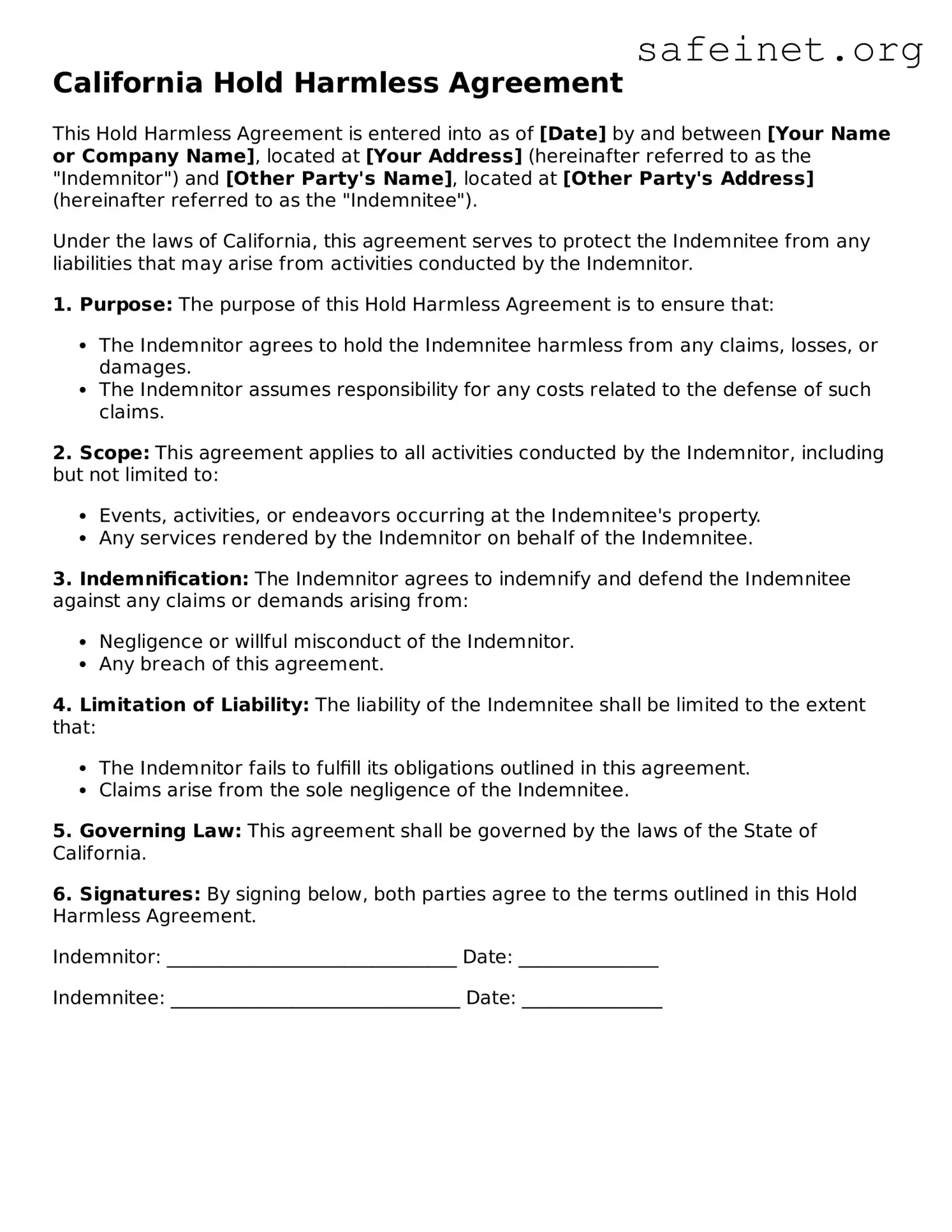What is a California Hold Harmless Agreement?
A California Hold Harmless Agreement is a legal document that protects one party from any liability or damages incurred by another party. It establishes that one party agrees to assume responsibility for specific risks, potentially shielding the other from legal claims or financial losses arising from a particular activity or situation.
Who typically uses a Hold Harmless Agreement?
This agreement is commonly used by businesses, event organizers, landlords, and contractors. It is often a key component in service agreements, rental contracts, and construction agreements to mitigate potential lawsuits or financial exposure related to accidents or damages.
What are the main components of a Hold Harmless Agreement?
A Hold Harmless Agreement usually contains several key elements: the names of the parties involved, a clear statement of indemnity, the scope of liability being covered, any specific activities or events, and signatures of both parties. These components must be clearly defined to ensure the agreement is enforceable.
Is a Hold Harmless Agreement legally binding?
Generally, a Hold Harmless Agreement is legally binding if it meets certain criteria. It must be entered into willingly by both parties, must not violate public policy, and must encompass clear and specific terms. However, even legally valid agreements may be challenged in court, depending on the circumstances.
Are there any limitations to a Hold Harmless Agreement?
Yes, there are limitations. A Hold Harmless Agreement cannot protect a party from gross negligence or willful misconduct. Courts may deem portions of the agreement unenforceable if they conflict with state laws or public policy, particularly in matters involving public safety.
Do I need a lawyer to draft a Hold Harmless Agreement?
While it is not strictly necessary to hire a lawyer to draft a Hold Harmless Agreement, it is advisable. A legal professional can ensure the document is tailored to your needs and complies with relevant laws, thereby reducing the likelihood of future disputes.
Can a Hold Harmless Agreement be modified after it is signed?
Yes, a Hold Harmless Agreement can be modified after signing, but both parties must agree to the changes. It's best practice to document any modifications in writing and have both parties sign the revised agreement to maintain clarity and enforceability.
What happens if a party breaches the Hold Harmless Agreement?
If a party breaches the Hold Harmless Agreement, the non-breaching party may pursue legal action for damages. The specific remedies available will depend on the terms of the agreement and the applicable state laws. Litigation could result in the breaching party being liable for any resulting damages or legal fees.
Is a Hold Harmless Agreement the same as liability insurance?
No, a Hold Harmless Agreement is not the same as liability insurance. While the agreement shifts the responsibility for specific risks from one party to another, liability insurance provides financial coverage for legal claims or damages. Both can work in tandem, but they serve different purposes.
Where can I find a template for a Hold Harmless Agreement?
Templates for Hold Harmless Agreements can be found online through various legal websites, or you may request one from a legal professional. When using a template, ensure that it is suitable for your specific situation and make any necessary modifications to fit your needs.
